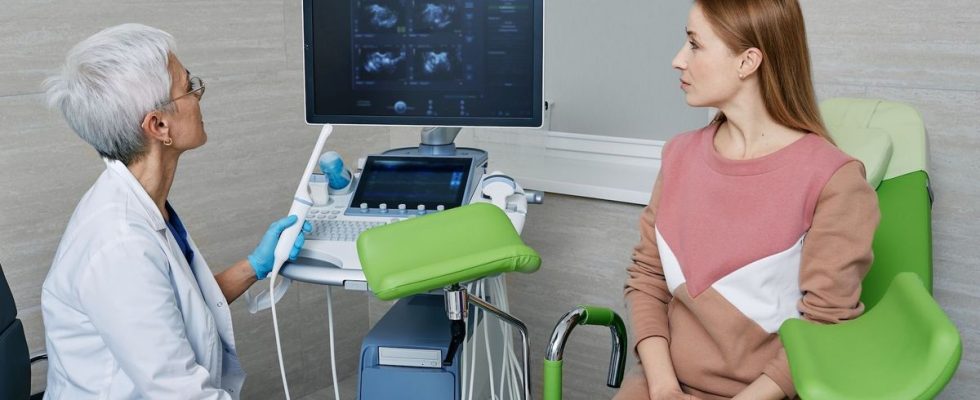Published on
Updated
Reading 2 mins.
Almost a third of women have had a transvaginal ultrasound in their lifetime. Can this invasive examination cause nosocomial infections? No, if the disinfection procedures are well followed. But according to a study, a third of doctors are unaware of the recommendations in force defining the 4 stages of disinfection of an ultrasound probe.
BVA and Germitec conducted a study on the management of infectious risks in France, offering a cross-section between the French and doctors on the subject. The results presented today focus on examinations involving an endocavitary probe.
Endovaginal ultrasound: a common examination
As part of the study, 80% of gynecologists said they used endocavitary ultrasound probes several times a day, and 29% of women said they had already performed an endovaginal ultrasound at least once in their life.
The reasons for performing the vaginal ultrasound are as follows:
- Gynecological follow-up (59%);
- Follow-up / suspicion of pregnancy (22%);
- Follow-up/suspicion of endometriosis or fibroid (16%);
- Assessment of bleeding or gynecological signs (15%);
- Follow-up/suspicion of cancer (8%).
Vaginal ultrasounds are therefore a medical act integrated into the follow-up and daily care and throughout the life of women. The concern for optimal disinfection of ultrasound tools appears all the more important to protect their health.
Do gynecologists underestimate the risk of infection?
This same study reveals that a third of medical specialists are unaware of the recommendations in force defining the 4 stages of disinfection of an ultrasound probe. These results therefore open up a more specific reflection on the links between infectious risks and women’s health in the context of gynecological care and examinations.
Prof. Israel Nisand, head of the Maternity Unit at the American Hospital in Neuilly sur Seine and former president of the National College of French Gynecologists and Obstetricians, says: “Doctors underestimate the risks of nosocomial diseases. The most worrying contamination is HPV contamination. 3,000 women contract an HPV-induced cancer per year and 1,000 die from it. It is difficult to protect oneself from HPV, and we need to study precisely the nosocomial aspect linked to this virus. No study has been published yet“.
The specialists rather trust the disinfection process used even if only 46% consider it infallible or almost. For Professor Nisand, “in terms of the safety of care, doctors have an obligation of result. They must show that they have done everything for patient safety and moreover, they must succeed. For the moment they have not become aware of this obligation of result in terms of safety of care“.
Changing practices to reduce the risk of infection therefore appears essential, as does patient information and the traceability of examinations. “For the future, it is essential that doctors take precautions that are visible to patients. They must switch to more effective and faster disinfection methods allowing true traceability. This will protect patients and doctors“concludes Professor Nisand.
